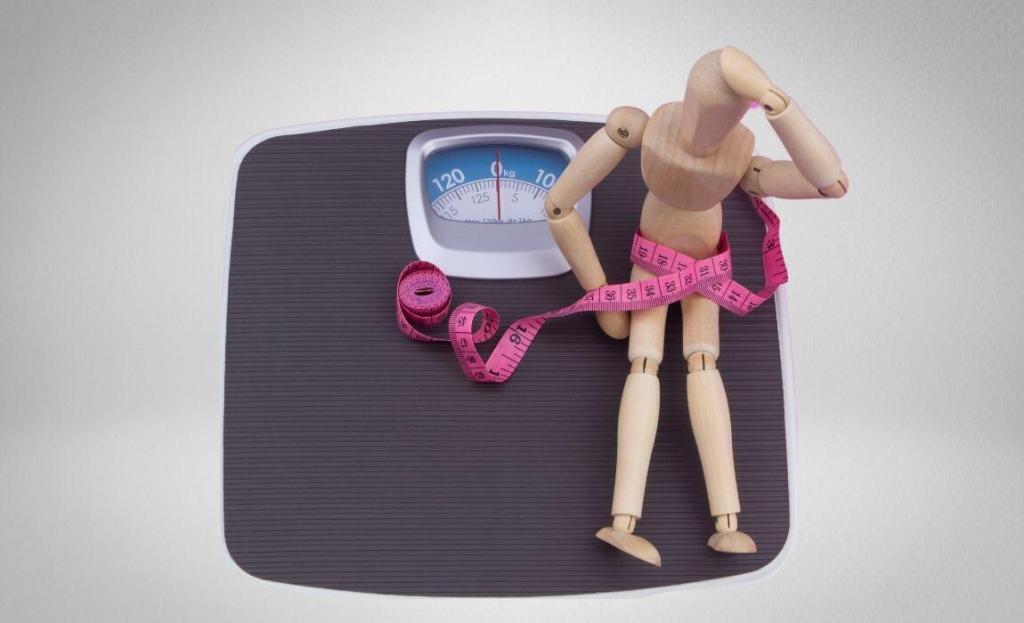Weight loss or fat loss for body shaping: 7 teaching points for your clients

When your client says she needs to lose weight because she wants her hourglass figure back, you have some major educating to do. Because simply seeing the scales go down will not reshape her body. But reducing fat in targeted areas with non-invasive body contouring will. So how do you best explain the difference between weight loss and fat loss for body shaping concerns? We’ll show you how with seven simple teaching points you can use.
Understanding why fat loss beats weight loss for body shaping concerns
Weight loss vs Fat loss for body shaping
#1 Are weight loss and fat loss the same?
Weight loss and fat loss are not the same. However, most clients don’t differentiate between weight loss and fat loss…and that’s wrong.
When your client is saying she needs to lose weight, it’s most likely because the terms “weight loss” and “fat loss” are so often used interchangeably.
Even medical professionals get it wrong. Most know the difference, nevertheless the majority of physicians advise their patients to “lose weight” to improve their health. When what they really mean to say is “lose the excess fat.” It’s the excess fat that leads to health problems.
But they rarely explain the difference to the patient.
And the problem is…losing pounds on the scales may not equate to a loss of fat. More on this later.
Weight Loss vs Fat Loss for body shaping
#2 What is weight loss and what is fat loss?
Here’s a simple comparison showing why your clients need fat loss for body shaping concerns.
Weight Loss
- Weight loss occurs as a result of an overall decrease in body weight from muscle, water, bone, and fat loss.
- When weight is lost from the loss of fat, the affected fat cells decrease in size (but remain in the body with the potential to increase in size again).
- Weight loss does not result in a decrease in the number of fat cells.
- And it’s genetics and gender that determine which fat cells reduce in size.
Fat Loss
- Fat loss can occur as a result of weight loss of fat, but it’s difficult to know if the weight loss is from fat, water, bone or muscle.
- And in most cases, fat loss from dieting is not lost without an accompanying loss of water, muscle and/or bone.
- Non-invasive body contouring treatments lead to fat loss.
- Non-invasive body contouring therapies result in fat loss with no chance or risk of water, bone and/or muscle loss.
- Non-invasive body contouring procedures target and affect specific problem areas.
Weight Loss vs Fat Loss for body shaping
#3 How do we measure weight loss and how do we measure fat loss?
Weight Loss
Scales show the total amount of weight lost, but not the amount of fat lost. The scales provide a number but they don’t tell your client she lost fat in her problem area, if her clothes are fitting better or if she is starting to see the shape she desires.
And when she sees the number on the scales going down, it doesn’t automatically mean it’s due to a loss of fat.
Her weight loss is a reduction of total body mass or total body composition. And she may be losing water, muscle and/or bone – in addition to fat.
That’s why tracking the weight on the scales is not a reliable measure of fat loss.
There are several alternatives to measuring loss of fat from dieting, but a 2021 study concluded that no single one of those methods was adequate, and that using a combination of the necessary tools was not practical and was very costly.
Take a look at a few of the tools used to measure fat loss from dieting. Click here for a complete list of tools and to read the entire study report.
- Body Mass Index (BMI)
- Waist Circumference
- Waist to Hip Ratio
- Waist to Height Ratio
- Body Fat Percentage
- Sagittal Abdominal Diameter
PRO TIP: Fat calipers are commonly used to measure fat loss. However, it’s important to note that the researchers did not consider fat calipers to be adequate tools to measure fat loss, and fat calipers did not even make their list. Do you use fat calipers?
The best way to track fat loss from a weight loss program?
- The best way to track the amount of fat lost from dieting is with a combination of weight loss tracking (scales) + photos + measurements
- The very same tools we use to track outcomes from our non-invasive body contouring treatments
Fat Loss
We measure the efficacy of non-invasive fat reduction treatments with a combination of
- Photos
- Measurements
- Weight
Photos
To measure fat loss from fat reduction treatments, photos should be taken at baseline and after conclusion of treatments.
And with photos, careful attention should be made to
- Background
- Lighting
- Positioning
- Avoiding shadows
- Consistency
Measurements
Likewise, multiple measurements should be taken at baseline and after conclusion of treatments. Each measurement should use anatomical landmarks, and be precise and consistent to accurately track the reduction in circumference.
Weight
Finally, we track weight to ensure stability. We are not looking for weight loss, but we do need to know if there has been a weight gain. Weight gain may skew the visible and measurable outcome from the fat reduction treatments.
Weight Loss vs Fat Loss for body shaping
#4 How does weight loss affect the body and how does fat loss affect the body?
Weight Loss
Our total body mass (also referred to as total body composition) is much more than fat. Our bodies consist of water, muscle mass, organs, bone mass and fat. They’re mostly water, with 60% of our body mass being ‘water weight.’
So when your client sees the number on the scales go down, she doesn’t know what kind of weight she has lost.
Plus experts agree that it’s close to impossible to lose fat without also losing what we don’t want to lose: muscle mass, bone mass, and water.
PRO TIP: It’s normal for water weight to vary from day to day, sometimes a lot. We often see clients feeling super excited to see a big drop in pounds only to see that same number (or more) show up on the scales in a day or two.
Fat Loss
Non-invasive body contouring fat reduction treatments do not affect muscle mass, bone mass or water. Just fat.
Depending on the body contouring technology used, fat cells are either damaged and/or destroyed resulting in fat loss which leads to a loss of inches in the targeted area.
Fat loss with non-invasive body contouring affects the lymphatic system…but NOT muscle mass, bone mass or water
Though non-invasive fat reduction does not affect muscle, bone or water, it does put an extra workload on the lymphatic system. So we must educate our clients about healthy lifestyles and consider offering lymphatic booster treatments to assist them.
Learn more about lymphatic boosters
Get your FREE copy of our Lymphatic Boosters Cheat Sheet now!
Weight Loss vs Fat Loss for body shaping
#5 How soon can improvement be seen with weight loss and how soon can improvement be seen with fat loss?
Weight Loss
Weight loss must be very slow to lose fat…and avoid losing muscle, bone and water.
Did you know? A weight loss of more than two pounds per week means your client has definitely lost muscle, bone, and/or water?!
Any more rapid weight loss can result in a loss of lean body mass…which is not good.
What is Lean Body Mass?
Lean body mass is the difference in total body weight and total body fat. So this means if your client is losing lean body mass, she is NOT losing fat.
Fat Loss
Non-invasive fat reduction treatments damage and/or destroy fat cells ‘real time’ in the treatment area. Following treatment, the body must clear the fat cells and debris left behind by the treatment…via the lymphatic system. Results are seen gradually. Depending on the technology, fat loss is seen with a loss in circumference within 3 to 16 weeks of treatment.
Weight Loss vs Fat Loss for body shaping
#6 What are the risks of weight loss and what are the risks of fat loss?
Weight Loss
We’ve just discussed that losing weight too rapidly can result in a loss of lean body mass. Like a domino effect, the reduction in lean body mass can cause a slowing of metabolic rate and a subsequent regaining of fat.
A 2018 study found that the loss of lean body mass caused by dieting all too often leads to severe negative consequences. Of specific importance to our body contouring clients, the researchers found that dieting caused the dieter’s metabolic rate to slow down. Metabolic rate is the rate at which you burn calories or energy. And this slowing of the metabolic rate leads to the regaining of any fat lost…and possibly even more.
This decrease in the rate of calorie burn leads to unfavorable changes in the dieter’s body composition, i.e. bigger fat percentage.
Imagine our body contouring clients feeling better about themselves…only to see the weight return to their problem areas?
Fat Loss
Non-invasive fat reduction technologies like cavitation, lipo laser, cryolipolysis, and laser lipolysis have been used safely for many years. Depending on the technology, clients may experience minor side effects like bruising, tenderness or swelling, but no long term adverse consequences have been reported.
Weight Loss vs Fat Loss for body shaping
#7 Can we control where the fat is lost with weight loss and can we control where fat is lost with fat loss?
Weight Loss
No, your client cannot control where she loses the weight with dieting. In other words, there is no promise that she will lose inches in or reshape her problem areas by losing weight.
An old myth has it that you can spot-reduce, that all you have to do is exercise to tell your body where to lose the weight. But that myth has long been proven wrong.
Multiple research studies over many years have proven that when dieting, exactly where your client loses the weight depends on these things: genetics, age, and gender. Exercise has no bearing at all on the location of weight loss.
It is widely accepted that just as our bodies are programmed to gain weight in specific areas, they are also programmed to lose weight in certain areas.
Fat Loss
Yes, we can control where fat is lost with body contouring treatments. Your client can decide where to target fat loss, then body contouring professionals can shape her body with non-invasive fat reduction treatments.
Bonus!
Visceral Fat or Subcutaneous Fat
What is the difference between subcutaneous and visceral fat and why does it matter for weight loss vs fat loss for body shaping?
Weight Loss
Visceral fat is located underneath your muscle, and inside your abdominal cavity, and wrapped around your internal organs.
- Visceral fat responds well to dieting; it’s among the first fat lost with a weight loss program.
- We cannot treat visceral fat with non-invasive body contouring technologies.
Recent research shows HIFEM muscle toning technology reduces visceral fat, but we are awaiting the official FDA position pending further studies.
Fat Loss
Subcutaneous fat is the “pinchable fat” located between your skin and your muscle.
- Subcutaneous fat is not easily reduced by dieting.
- Subcutaneous fat can be very effectively reduced with non-invasive body contouring technology, as well as with surgical interventions like liposuction.
